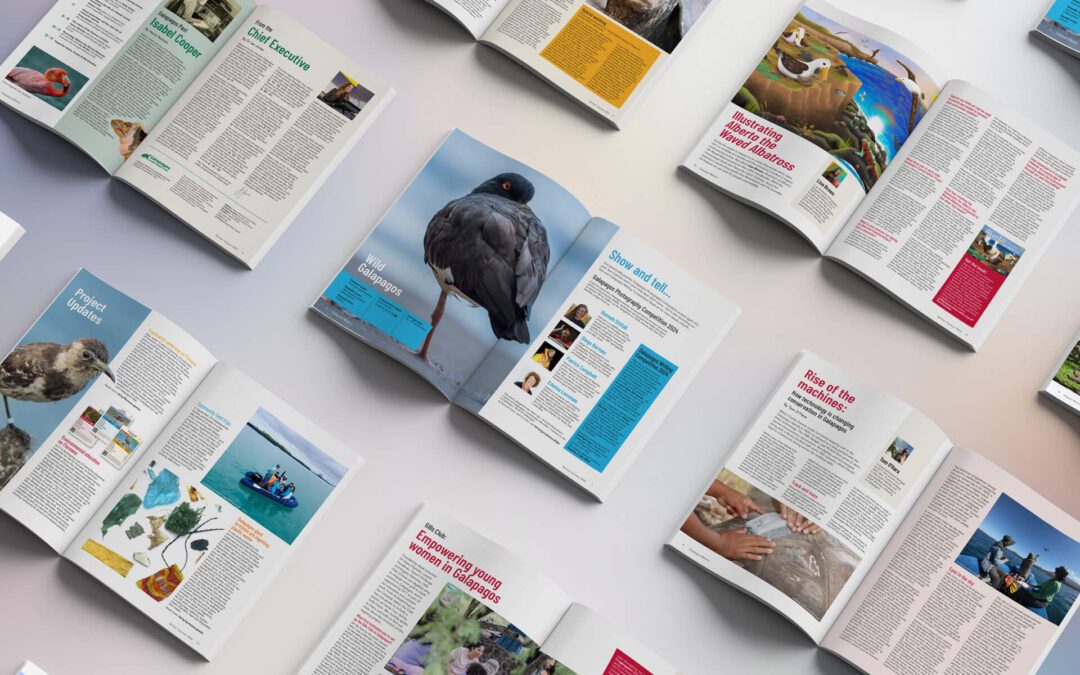Contents
What is corporate branding
The ROI of corporate branding
The building blocks of a modern corporate brand
How to build (or rebuild) a corporate brand
Measuring brand strength
Case studies: Corporate branding in action
Follow us
Every company has a logo, but don’t make the mistake of thinking this is the same thing as a brand – it’s not. Effective corporate branding is about more than just consistent imagery, a wordmark and a few primary colour palettes. What sets the best-performing brands apart from the rest is trust.
When customers see your logo or imagery, they should immediately connect this with your company and have an understanding of what they can expect from the organisation. But in too many cases, unclear or inconsistent branding means this doesn’t happen. In this article, we’ll explore why corporate branding matters, what’s involved in building it and how it can be used as a growth driver for a business.
What is corporate branding
Corporate branding is the beating heart of a company’s identity. It communicates not only who you are and what you do, but why you do it. In essence, it’s a visual shorthand for everything your business is about, communicating its ethos, values and culture.
It shouldn’t be confused with product branding, which is more sales-focused and targeted directly at customers. Corporate branding takes a wider view. It’s not just communication with buyers, but employees, stakeholders and other partners about what the company stands for.
Done well, corporate branding helps everyone both inside and outside the organisation, form a clear idea about the company’s identity and purpose, which in turns builds trust and confidence in the mission. However, if it is not communicated effectively, it can mean disjointed marketing campaigns, a lack of clarity about the firm’s direction and an inability to connect effectively with customers.
The ROI of corporate branding: from building trust to a direct impact
A strong corporate brand can have a direct impact on a firm’s bottom line. Here are some of the key advantages of a good corporate brand and how this translates into real-world results:
- Greater trust: When potential customers have confidence in a brand and understand what it does, they’re more likely to convert.
- Improved consistency: A clear identity means more coherent messaging across all departments.
- Stronger purpose: Knowing what a brand does and why they do it means that customers are more likely to stay with the brand, returning again and again.
- Better internal engagement: Corporate branding isn’t just for customers. When employees fully understand the branding and what’s involved, they not only gain a stronger connection to the business, but also have the confidence and autonomy to create their own content that is in line with the firm’s corporate branding.
Building a clear identity takes time and effort. But it shouldn’t be viewed as an expense – rather, it’s a process that can generate a strong ROI and set up a company well for years to come.
The building blocks of a modern corporate brand
There are a wide range of assets and materials that go into a corporate brand. Logo, imagery, colours, fonts, and photography styles all factor into this. But when making decisions on these elements, it pays to keep a few core principles in mind. Focusing on the below pillars helps ensure that the final results are fit for purpose:
- Clarity: All branding processes should start with a clear understanding of what messages the business wants to reflect, such as its goals, culture and values.
- Consistency: All communications and content should be in line with the branding guidelines, regardless of platform.
- Culture: The branding should always speak to the core values and culture that define the business.
- Creativity: To stand out from the crowd, branding design must tell a story. Using imagination and storytelling can transform an organisation into a brand audiences can connect with and remember.

How to build (or rebuild) a corporate brand
When conducting a brand build or rebuild, you need to ensure you’re fully in tune with who the client is, what their values are and how they want to represent themselves to customers. There are a few key steps that every business should consider to do this, including:
- Discovery workshops: In-person sessions with the brand, its employees and leaders discuss the history of the company, its goals and the key drivers behind it.
- Brand architecture audit: For larger, multi-departmental firms, it’s vital to understand how the company works as a whole and where divisions exist before building a single, cohesive brand.
- Visual crafting: This is where visual assets are created to tell the brand’s story and bring it to life.
- Physical and digital integration: Once the primary look and feel of the brand has been decided on, it’s essential that the key themes are applied consistently across physical and digital assets. Aligning websites, social platforms and printed materials creates a single corporate identity.
- Long-term evolution: Corporate branding shouldn’t be left untouched once launched. It should be periodically revisited to ensure it evolves with their brand and stays up-to-date, with brand guidelines and assets modified accordingly.
Measuring brand strength
Directly tracking the performance of a corporate brand can seem like an impossible task. However, there are a few key indicators that can be used to monitor the overall performance of a business. Known as brand health metrics, these look at how the brand is perceived among customers and how this translates into action. Key metrics to focus on include:
- Net Promoter Score: Measures customer satisfaction and likelihood to recommend your brand.
- Brand awareness: Gauges how familiar your target audience is with your brand.
- Brand perception: Reflects how customers feel about and associate with your brand.
- Brand recall: Indicates how easily customers remember your brand when prompted by your product category.
- Brand positioning: Shows how well your brand stands out from competitors in the market.
- Brand loyalty: Measures repeat engagement and long-term customer commitment to your brand.
To measure these metrics, businesses can combine quantitative and qualitative methods. Surveys and feedback forms provide direct insights into satisfaction, awareness and perception, while digital analytics tools track search volume, website traffic and social media engagement to gauge visibility and sentiment. Monitoring customer retention, repeat purchases and referral rates offers tangible data on loyalty.
Case studies: corporate branding in action
At TGDH, we work with brands across a wide range of sectors and sizes to refine their positioning and create corporate branding that speaks to customers. Here are a couple of examples.
Williams: This award-winning plumbing and heating merchant supplies exclusively to the trade, so needed to be seen as a trusted partner for professionals. We helped create a brand identity that reflected their high standards and ambitious ethos. This included an evolution of their logo to give their company name greater prominence while still highlighting their trade-only focus.
This delivered a cleaner, stronger mark that better communicates the brand’s confidence and focus. In addition, a modernised colour palette and a standardised suite of marketing materials helped provide consistency across all touchpoints and locations, from digital templates to point-of-sale signage.

Coffin Mew: Most law firms project a fairly conservative, risk-averse image, but Coffin Mew wanted to do things differently. It has a bold, innovative and entrepreneurial culture that needed to be showcased in its brand. We started by looking at the firm’s history and what set them apart, coming up with a “weave” concept to visually represent their philosophy. This wasn’t just an aesthetic change – it was a strategic move to position Coffin Mew as an industry leader, and was recognised by being shortlisted for the prestigious Design Week Awards.
Corporate branding is about more than aesthetics – it’s about who you are. A clear, well-executed brand gives direction, builds credibility and shapes how your business is perceived and experienced. It’s not just a visual exercise, but a foundation for better decisions, stronger relationships and meaningful, sustainable growth.
More insights

Publication design that works for your brand and audience
Explore print and digital publication design services, key elements to consider and the trends shaping how brands create magazines, brochures and reports.

Advertising design guide: create ads that perform
We explore how to create advertising designs that stand out, connect with your audience and drive campaign performance across physical and digital channels.

Brand guidelines examples: How to build a stronger identity
What should you be doing to make sure your brand design rules are as clear as possible? Here’s how to get this right – and some great brand guidelines examples of firms that have achieved this.
